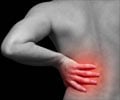Researchers from Massachusetts General Hospital (MGH) have devised a simple bedside test that can effectively diagnose chronic back pain.
A simple bedside technique to diagnose chronic back pain all by yourself - this is what researchers from Massachusetts General Hospital (MGH) have devised to more accurately diagnose the widespread condition. This new system can efficiently replace the currently-practised 'patient-questioning' method that physicians adopt for diagnosis.
According to the study, the new test is better than currently used techniques in identifying specific symptoms and signs that could signify underlying pain mechanisms."Currently clinicians measure pain only by asking how bad it is, using scales from mild to moderate to severe or asking patients to rate their pain from 1 to 10," said Dr Joachim Scholz, of the Neural Plasticity Research Group in the MGH Department of Anesthesia and Critical Care, lead author of the study.
"This approach misses key characteristics that reflect the mechanisms causing the pain," Scholz added.
Dr Clifford Woolf, director of the Neural Plasticity Research Group said that by evaluating individual components of pain the new method allows the creation of a 'pain fingerprint' for each patient.
During the study, the investigators enrolled a group of 187 patients with chronic pain caused by a known condition.
These participants received an extensive medical history and physical examination, including 23 simple tests that could be conducted at the bedside or in an office visit.
Advertisement
The StEP includes a set of 6 questions and 10 physical tests that best discriminated between neuropathic and nonneuropathic pain.
Advertisement
"The treatment of neuropathic and nonneuropathic pain is quite different, and if a diagnosis is wrong, patients may receive treatment, including surgery, that does not improve their pain," said Scholz.
"We showed that StEP is a valuable diagnostic tool for low back pain and will conduct further studies to determine the usefulness of our clinical approach in other types of pain.
"The critical test will be seeing how patients with different subtypes of pain respond to different treatments, something we hope to examine in the very near future," Scholz added.
The report appears in the open-access journal PLoS Medicine.
Source-ANI
TAN/L










